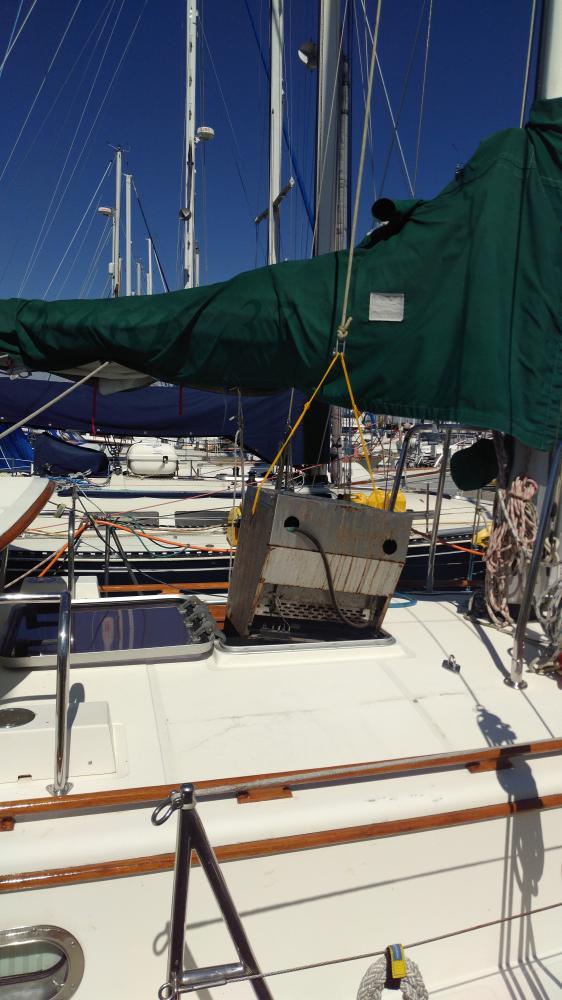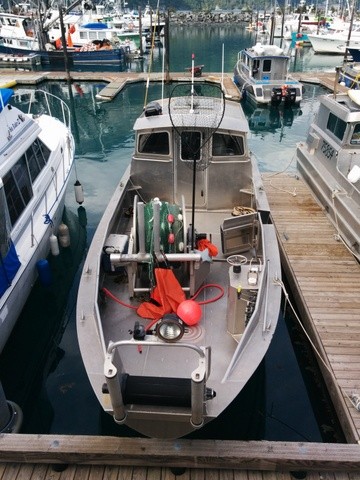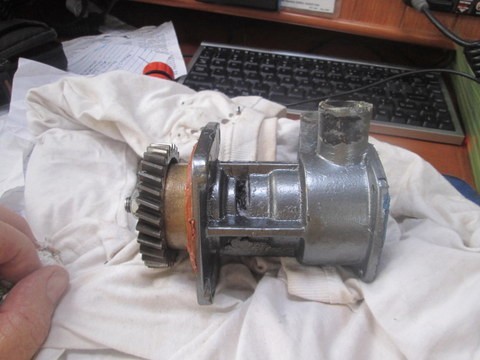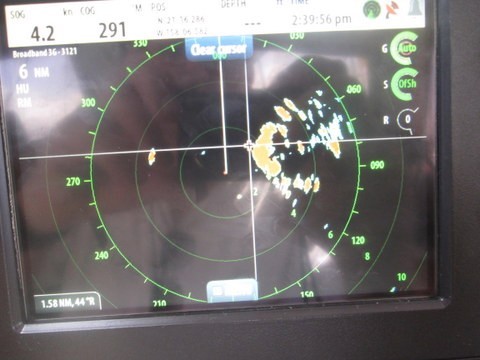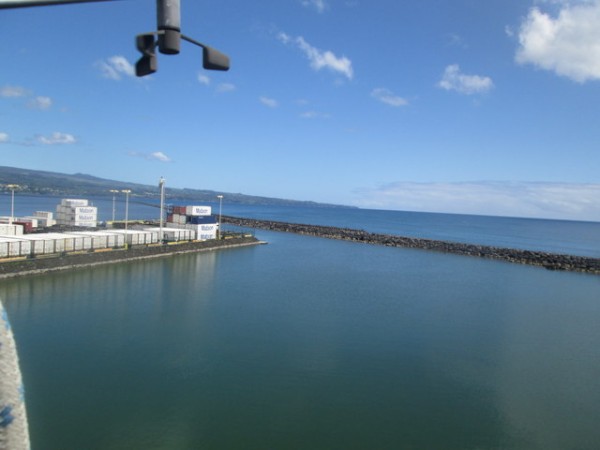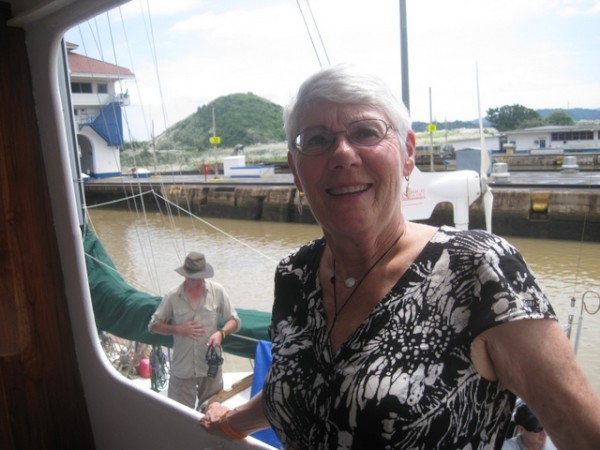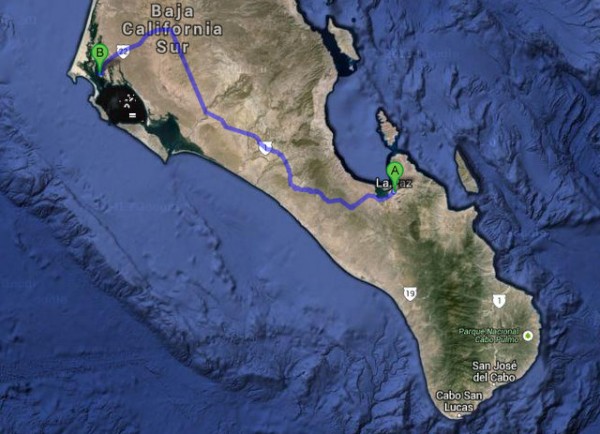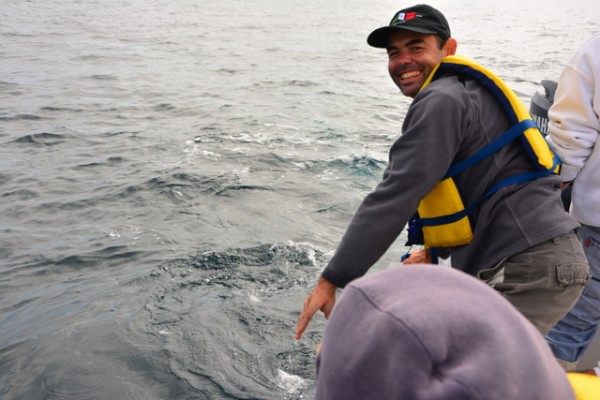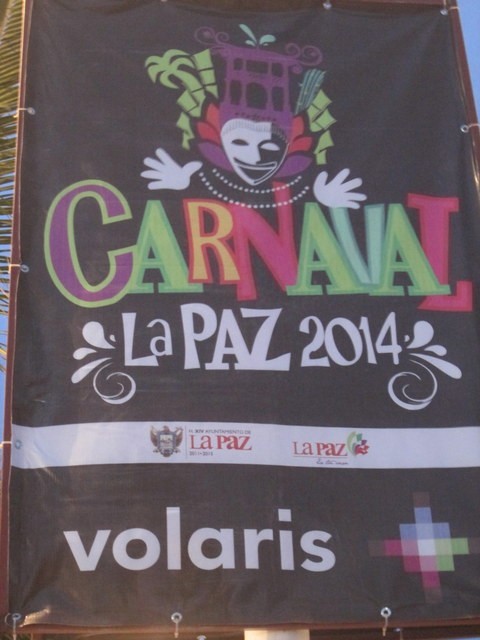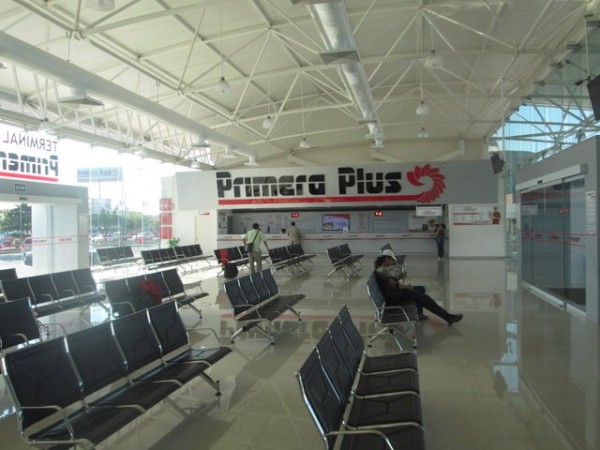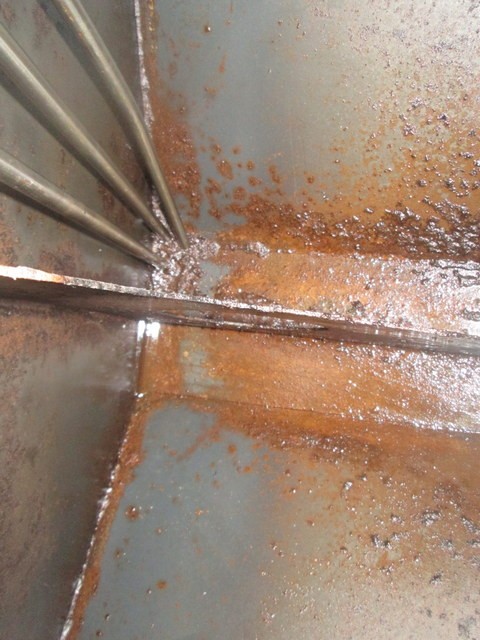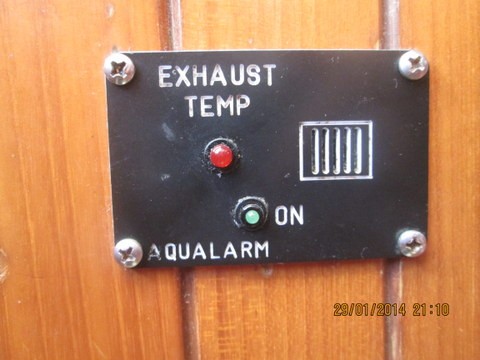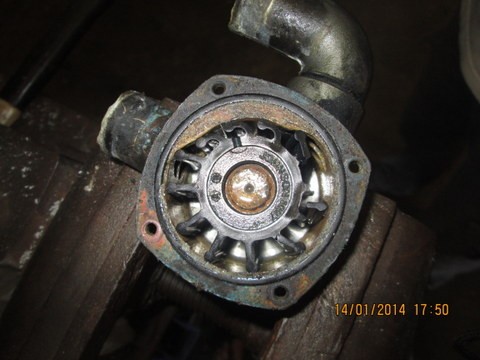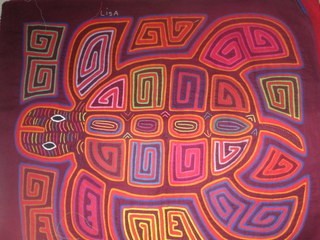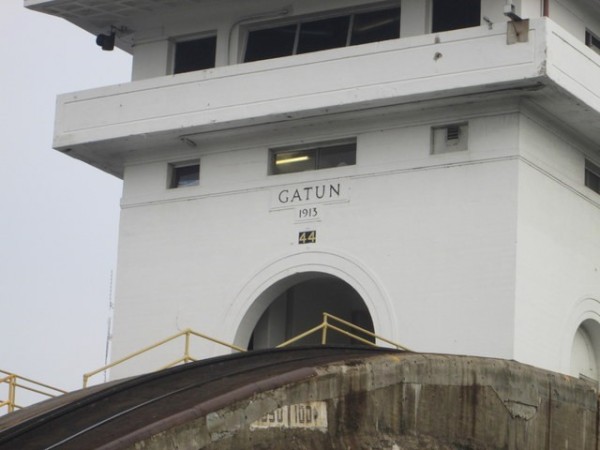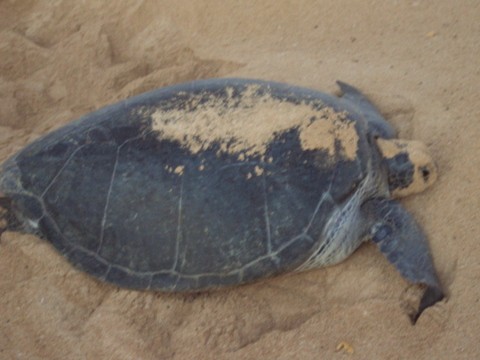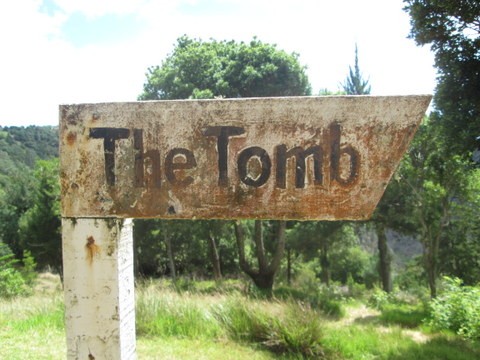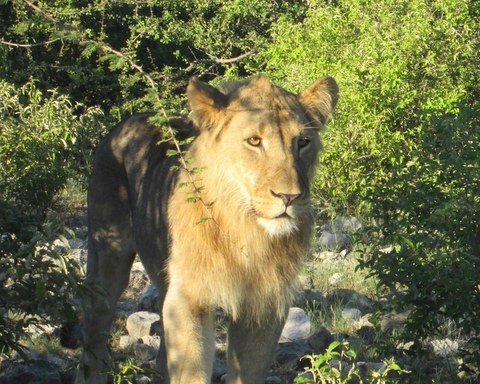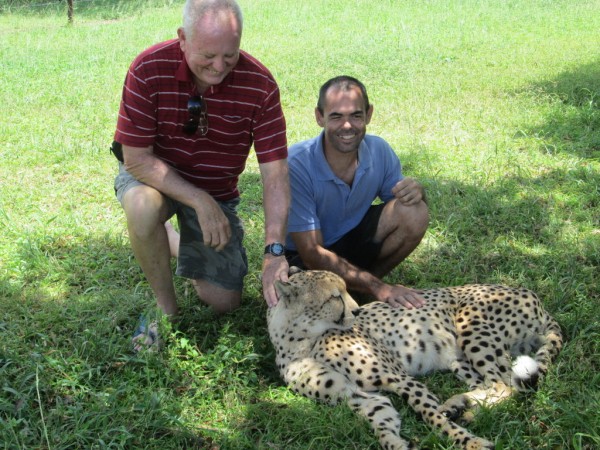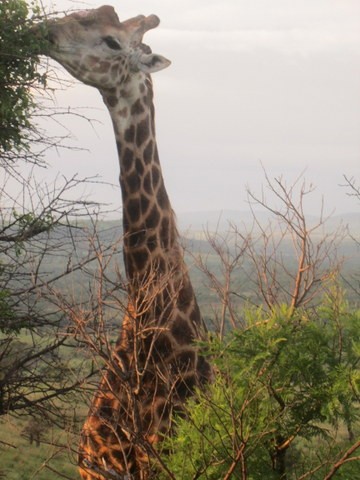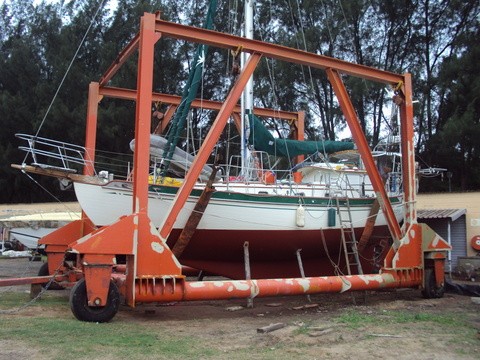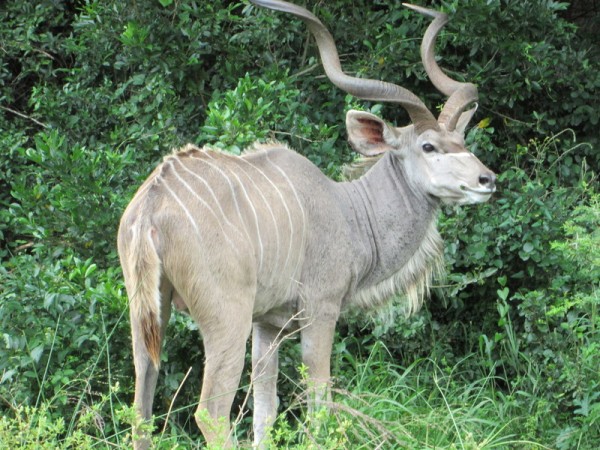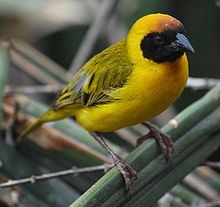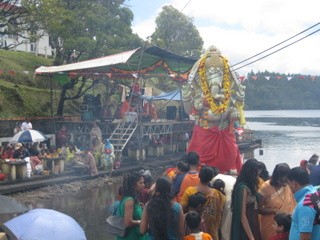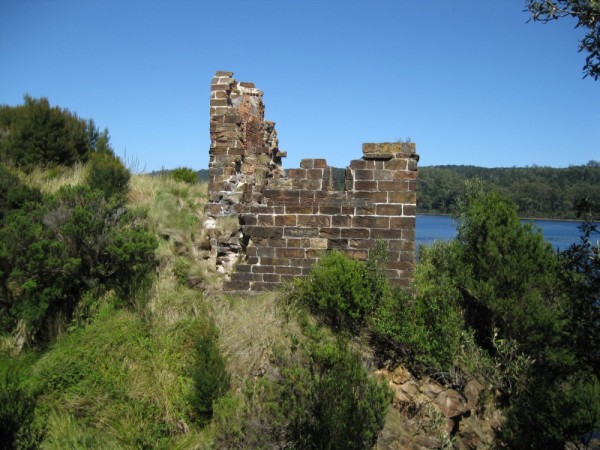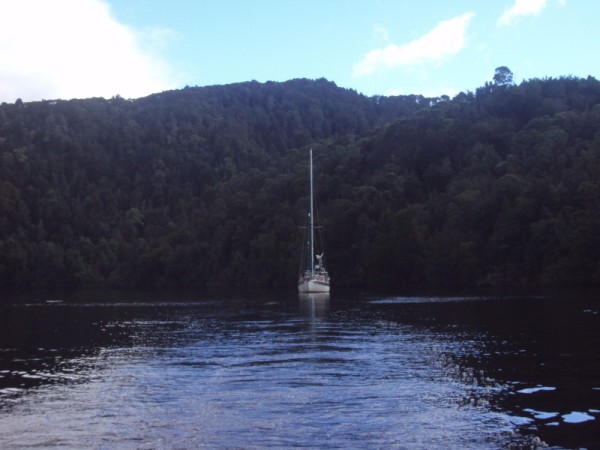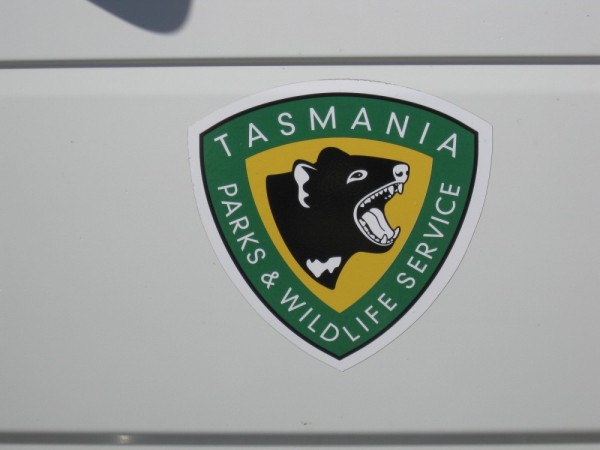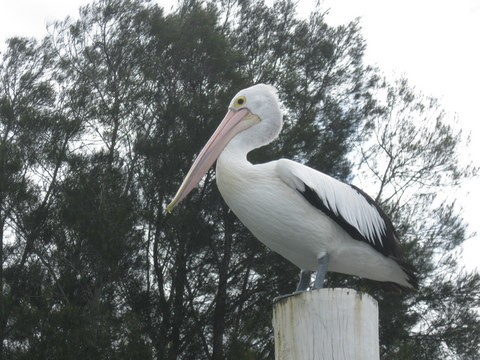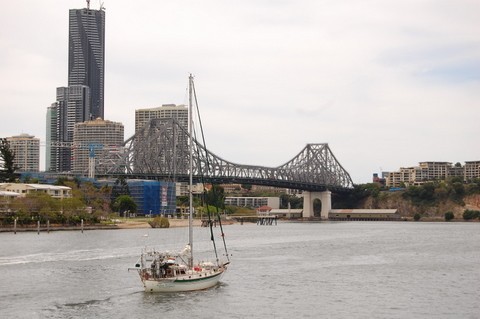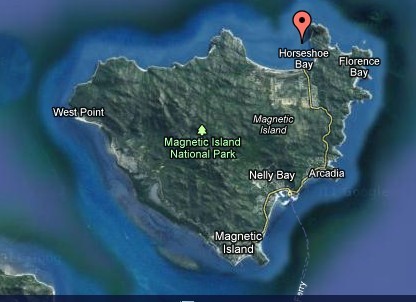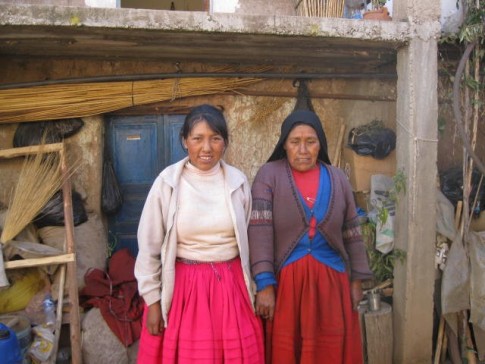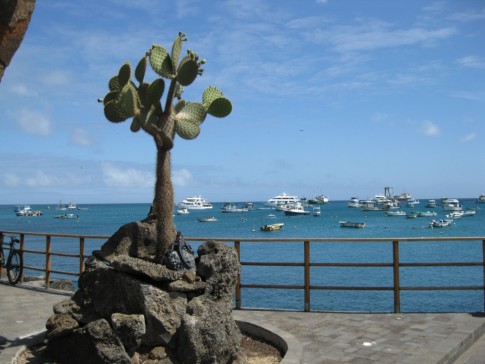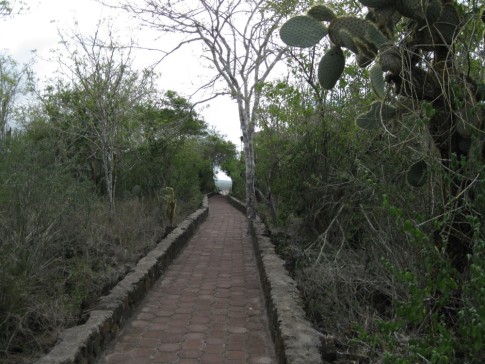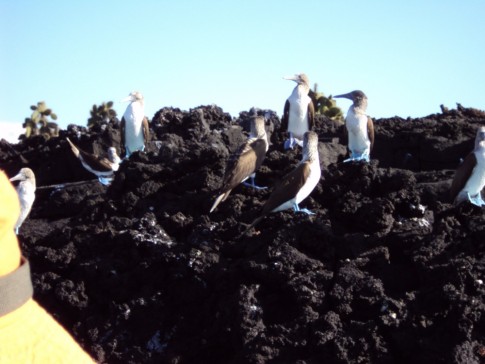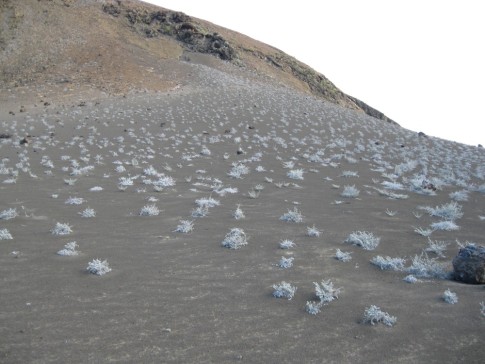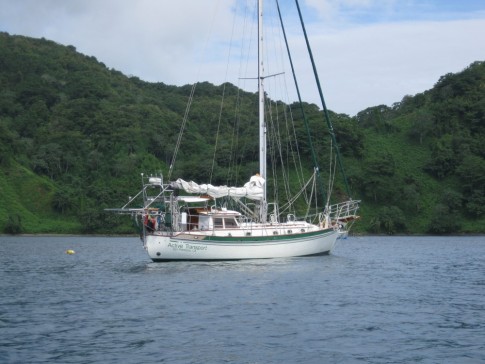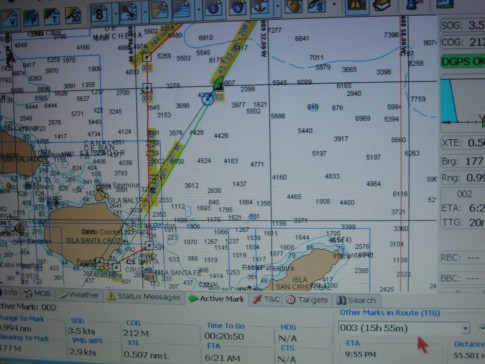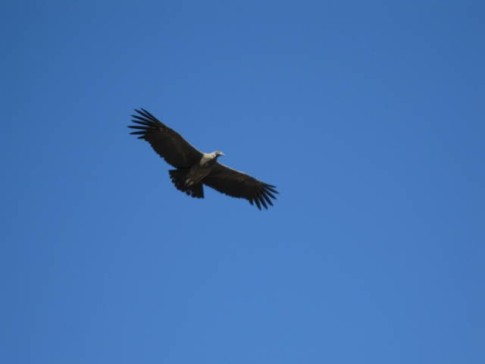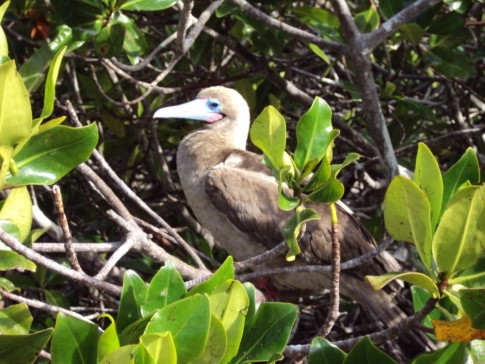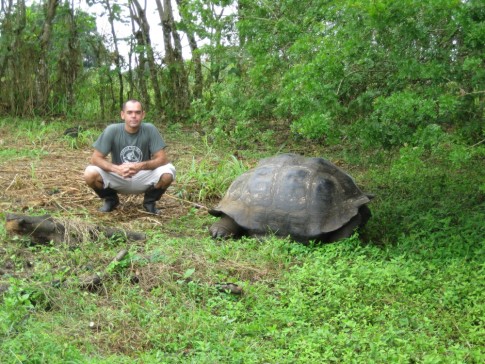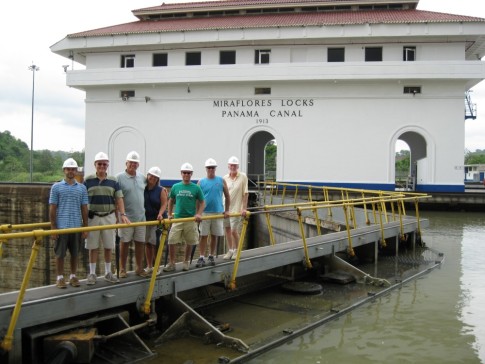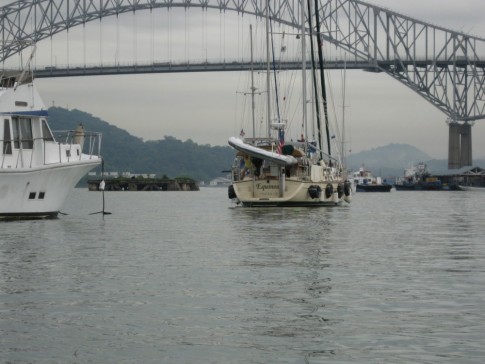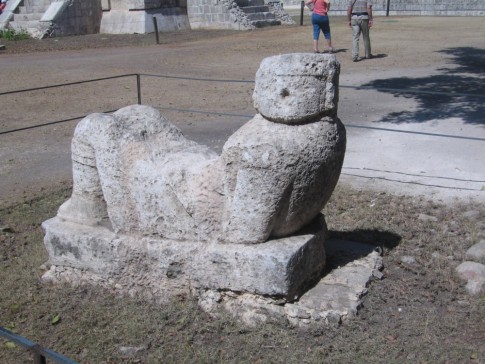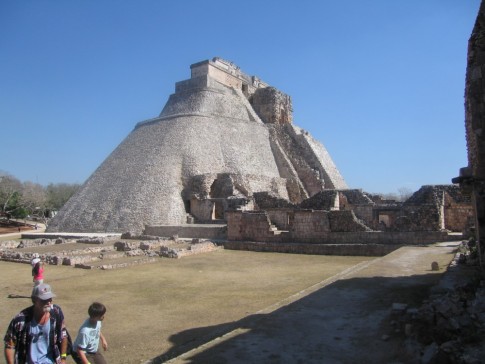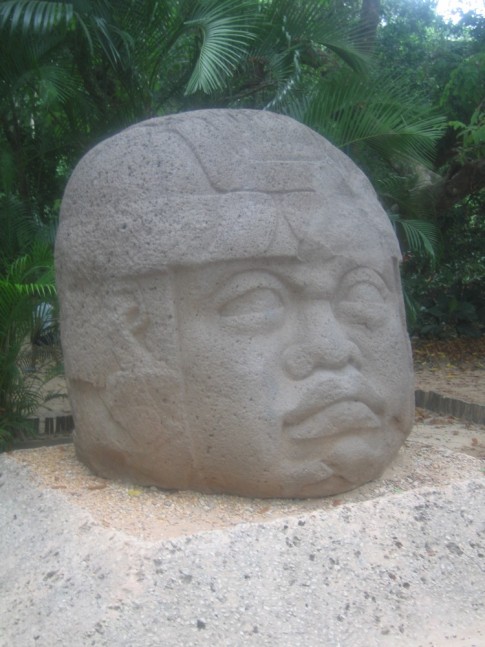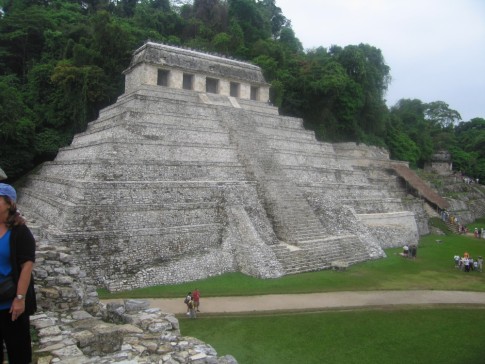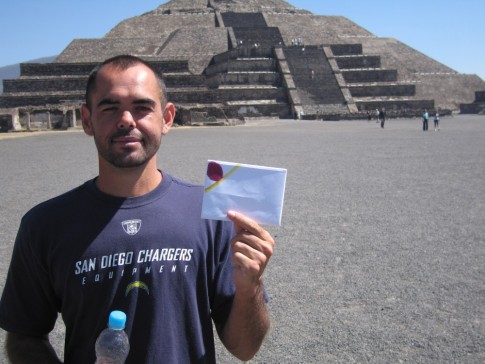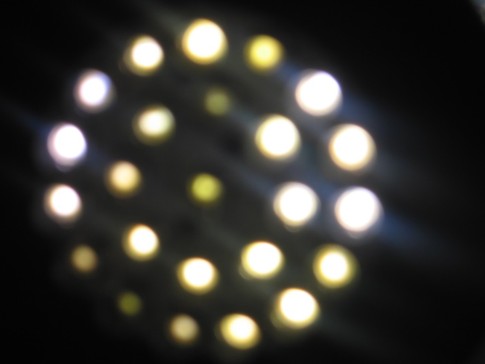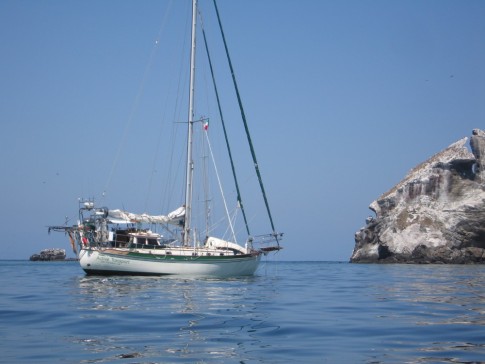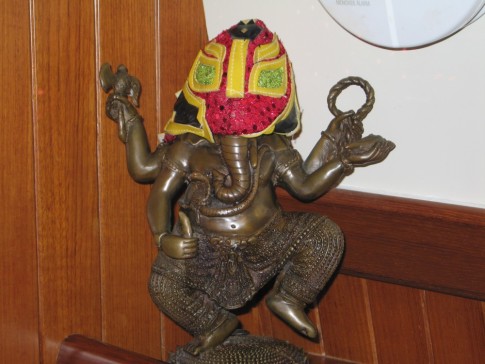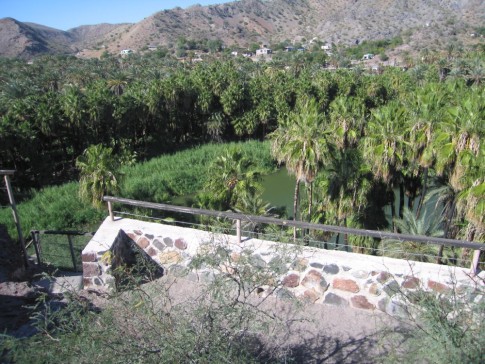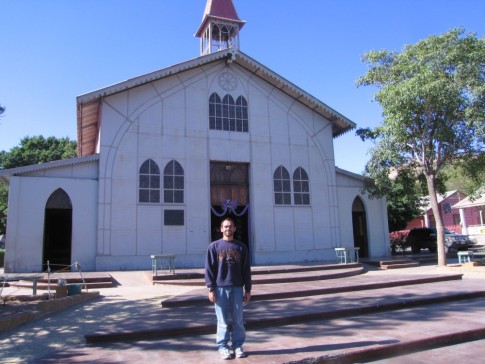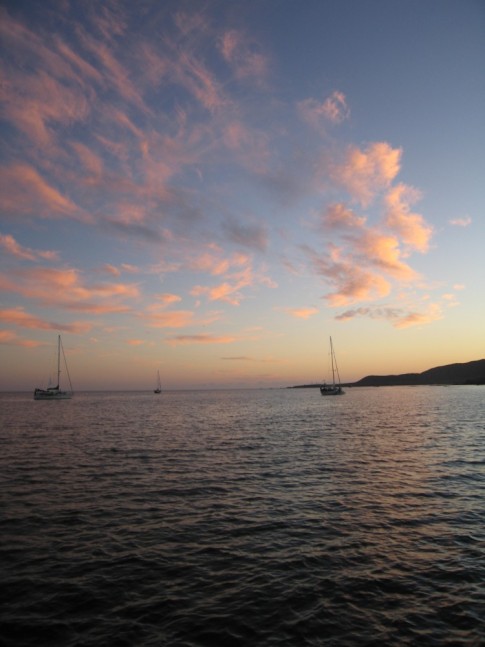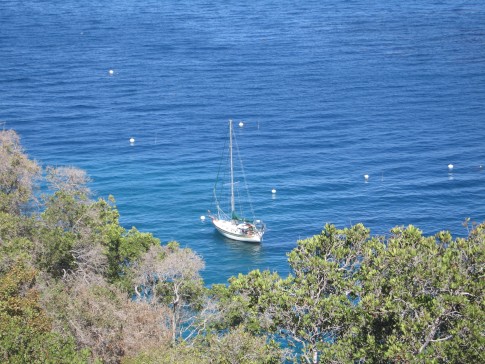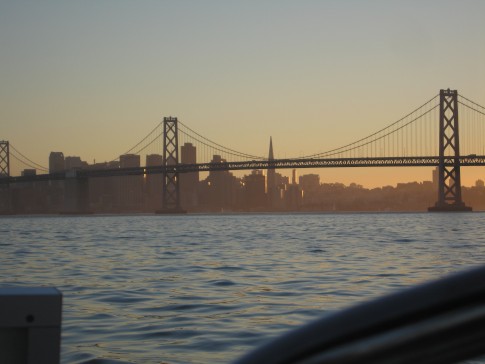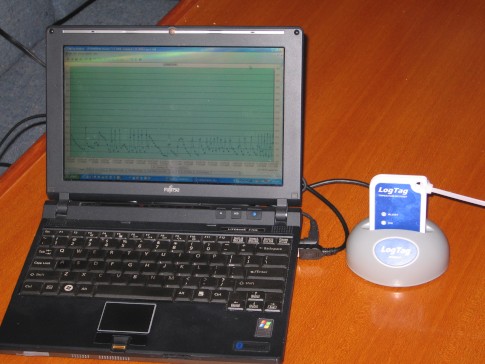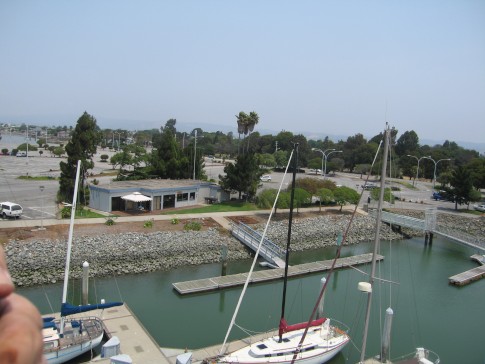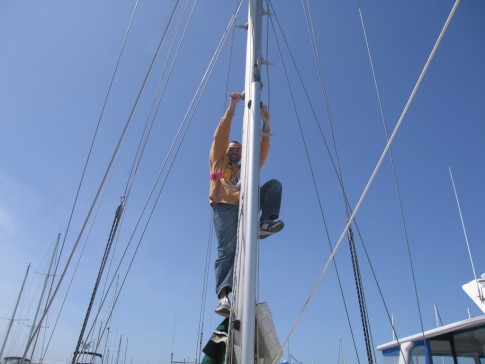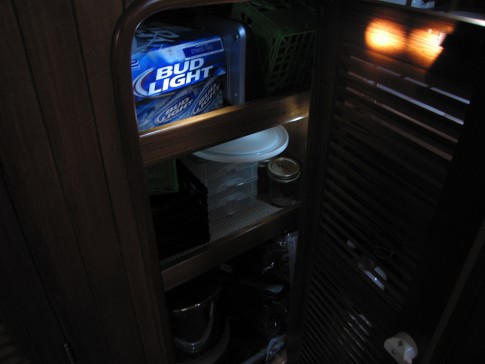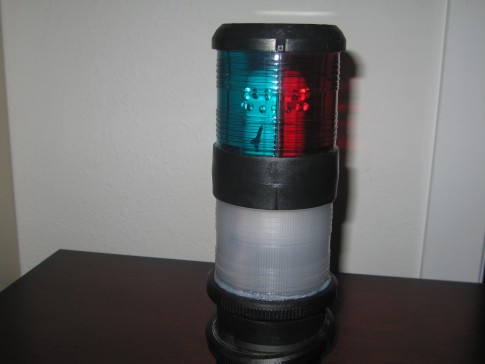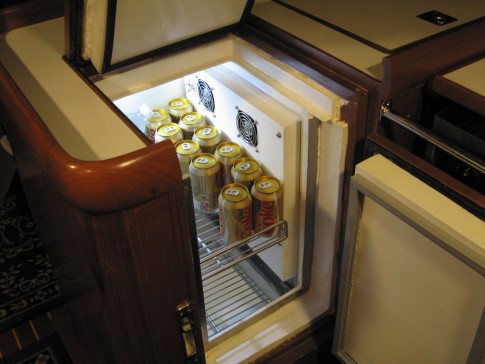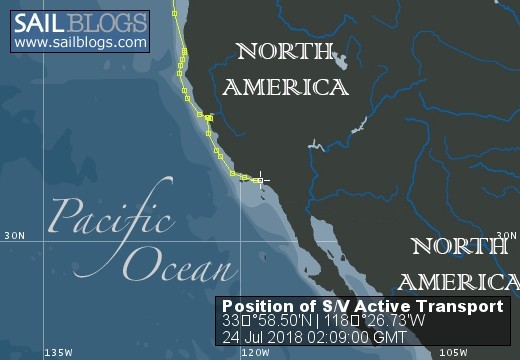
Cruising Active Transport
We circumnavigated between 2008 and 2014. After sailing to Alaska we ended up in Seattle for four years.
19 September 2018
08 August 2018 | Marina del Rey
23 July 2018 | Marina del Rey
22 July 2018 | 25 miles west of Cambria
21 July 2018 | Crossing Monterey Bay
21 July 2018 | South of the Golden Gate
16 July 2018
14 July 2018 | Grand Marina
14 July 2018 | San Francisco Bay
13 July 2018 | Point Arena
12 July 2018 | Thirty Miles NW of Humbolt Bay, CA
11 July 2018 | Crescent City
10 July 2018 | Neah Bay
09 July 2018 | Thirty five miles WNW of Reedsport, Oregon
08 July 2018 | Forty Miles West of Columbia River Entrance
07 July 2018 | Neah Bay
06 July 2018 | Neah Bay Marina
05 July 2018 | Neah Bay Marina
04 July 2018
03 July 2018 | Port Angeles City Floats
Our visit to St Helena
27 March 2013 | St Helena
John
St Helena was a very interesting stop.
There have been moorings installed to the west of the Jamestown water front area which makes stopping here much easier than it was in the past. The usable anchorage area is very limited and the holding reputed to be very poor.
The local government installed a mooring field with moorings rated for 20 and 40 ton boats. The yellow buoys are for boats up to 20 tons and the red ones for larger boats. When you come in port control tells you to pick up a mooring. In some cases they have visited yachts but we arrived on the same day as the ship that services the island so customs and immigration were too busy to bother with us. We just went into shore and visited customs, immigration and the port control offices. Nobody bawled us out for not waiting on board.
We were required to buy health insurance for the three days that we intended to be in town. Between the premium and the administrative and the services tax that cost us about 17 pounds for the two of us. Other cruisers said that the immigration people excepted a copy of their DAN policy which does not cover medical care but does pay for medical exacuation.
The bank was able to give us St Helena pounds (equivalent to GBP) for a 5% fee. They dont have an ATM yet. We cut it as close as we dared on the amount we got since we are not sure that St Helena pounds will be able to be exchanged anywhere past Ascension Island.
A few interesting facts about St Helena include:
St Helena was discovered by the Portuguese in 1502. The kept the secret to themselves for almost 100 years. It was a very handy provisioning stop for ships bound to or from India.
It passed into Dutch control before becoming an English possession and strategic outpost in the British empire. Its importance declined after the completion of the Suez canal and the advent of steam ships. It seem ironic that it is now becoming popular with yachts because the preferred route through the Red sea and Suez canal to the Mediterranean has become to dangerous because of pirates.
Because the Island was used as a prison for more than jus Napoleon there are lots of fortifications around the island and the waterfront of Jamestown was obviously once strongly fortified.
The island is expecting to get cell phone service next year.
Satellite TV is a new thing here. The big problem is that the most suitable satellite is below the horizon over the middle of the Indian Ocean. The selection of TV channels says a lot about the place. There are two news stations, three movie stations and 7 sports stations. These folks do like their sports.
As of the 1970s one in 5 houses did not have electricity. Indoor plumbing was also late in coming and 70 percent of the houses still use wood for cooking.
Flax was probably the largest industry that ever existed here. It survived for 60 years with some government subsidy near the end. The plants were brought from New Zealand and did very well on St Helena. A large percentage of the island is still covered with them. From a distance they look like bit aloe plants but up close its obvious that the leaves are much thinner and are filled with long cellulose fibers that are what the industry is based on.
The flax plants were harvested, dried and processed to the point where the dried fibers could be shipped to England for manufacturing into rope, brooms, and soles for sandals. Like a good colony St Helena exported raw materials and imported finished goods.
We had the good fortune to meeting Gilbert and Joan who are a local couple that our friends Dave and Marcie on Nine of Cups has met about 8 years ago. They were very gracious with their hospitality. They picked us up outside the tourist information office and drove us all over the island to see the vistas from all directions before we were finished.
Gilbert spent his career as a supervisor for the Cable and wireless company on the island and Joan was the executive assistant to the various governors who passed through during her working years. They are both retired now but, like a lot of retired people, are very busy. They are involved in a number of community projects. The evening of our tour they were headed to a fund raiser cocktail party on the RMS St Helena that was anchored in the harbor. On Sunday they are among the guests at a going away party for a diplomat that is being held at Plantation House, the governor's residence.
There was not a single car or pedestrian we passed that Gilbert and Joan did not know. There are about 4000 people on the Island and Gilbert estimated that they knew over 90% of them, or at least knew who they were based on family connections.
We were expecting a very British flavor to the place but were surprised when the voices we heard on the radio, as we sailed in, were not at all British sounding. The population here is a very hybrid mix of people from just about everywhere that the British empire had colonies and, as usually happens in such case, the resulting culture is an amalgam.
There are a lot of people who are obviously Polynesian and others who had a strong resemblance to the Maori people of New Zealand. It turns out that the big industry on the island for many years was growing flax that had been imported from NZ so a lot of Maori people came because they knew how to cultivate and process the harvested plants.
The single most famous resident of St Helena was Napoleon who was exiled here after he met is Waterloo at the Battle of Waterloo around 1814. Napoleon, very cleverly, surrendered to a British Captain on a ship named the Bellerophon. The Bellerophon was the ship where Matthew Flinders served while the British were harassing French shipping in the channel. That was years before Waterloo.
Napoleon surrendered to the British because he knew that the Russians and the Prussians were so pissed at him that they would have strung him up without much ceremony. As it turned out the British moved him to St. Helena which was so remote that it would be very difficult for him to pull of an escape as he had done earlier when imprisoned on Elba.
During Napoleon's years on St. Helena no ship was allowed to leave the harbor until the governor had proof that Napoleon was still on the island. The British were gracious in their treatment of him but also careful. I guess the fact that he gave them the slip at Elba still smarted.
We first visited Longwood house, with Gilbert and Joan, which was a house renovated for his imprisonment. It is where he died in 1821. His death was attributed to stomach cancer that ran in his family. Conspiracy theorists speculate that he was poisoned with arsenic but that should be easily tested for so it was a factor in his death Im sure that is documented somewhere. He suffered from a prolonged illness before he died and there were several physicians present for his autopsy.
There are three places on the Island that are considered French territory. Longwood house is one and the French government has removed all the original furniture and paintings for restoration in Paris. After restoration the artifacts will go a on a world tour and are supposed to return to St Helena in 2017. I did not get the impression that anyone was holding his or her breath about those artifacts actually returning to St. Helena.
One interesting detail at Longwood house was some peepholes that Napoleon is said to have carved in the shutters on the windows so that he could see out. The guide said they think he did it with his pen knife. Seeing the position of the peepholes gave us a pretty good idea of his height. I got some photos of the peep holes and will post them when we get somewhere with reasonably priced internet.
We also got to see the site of the new airport that is being built for St Helena.
There has never been and airfield here and it was a very close vote that got the idea approved. The British government put up 350,000 pounds to build the airport and the project is well underway. I really wonder if the people here can appreciate what is going to happen to the place when regular air service becomes an option for bringing visitors to St Helena.
We also visited the grounds of Plantation House which is the governor's residence. There are several giant tortoises on the grounds including one named Johnathon who came here 200 years ago when he was a mere 50 years old.
They also took us to Ladder fort which is on a cliff overlooking the town on one side and the ocean on the other. We could see Active Transport on her mooring from the fort.
On the town side of the fort is a staircase called Jacob's ladder that 600 feet high and has 699 steps (not counted by us) . While we were up there Shawn walked down a few steps and turned around . He tried to look exhausted as I took his picture as though he had started at the bottom..
Some of the fort buildings had served as the secondary school where Gilbert and Joan went to school. They mentioned that a resort development company was interested in developing the old buildings into a 5 star hotel.
Gilbert and Joan treated us to lunch at Annie's place where is a cruiser hangout that overlooks the formal garden near �"The Castle�" which is where the governor's office is located.
The tour that Gilbert and Joan took us on was great but just as interesting was the time we spent with them in the car where we learned a lot about the history of St Helena and it's present day issues. They were both born here and can't see living anywhere else. They are going on a holiday to England and The Netherlands next year which will probably do a lot to reinforce their appreciation of the life they have here in St Helena.
The following day we hired a cab driver through the tourist office to take us to the two remaining Napoleon sites on the island.
First we went to the Briars Pavilion which is where Napoleon lived for 7 weeks while renovations were being completed on Longwood house.
We really lucked out with the guide at Briars Pavilion. He was named Trevor Magellan. His Dad was Portuguese and his Mom was Irish. One of the drivers of a tour bus said that Trevor was one of the few people of actual Portuguese descent on the island even though the place was discovered by the Portuguese and they had kept its existence secret for almost 100 years.
Trevor knew a lot of the history of the place and its famous occupant.
Trevor told us that Napoleon noticed the Balcombe Estate when he was being escorted back to town following a visit to Longwood house that was still undergoing restoration. He apparently asked the governor if he might be introduced to the owner of the estate who was named Balcombe.
After recovering from the shock of being introduced to the man who had spent the previous 20 years plundering Europe, Mr Balcome offered Napoleon the opportunity to live in a small Pavilion on his estate while waiting for the completion of the Longwood house renovations.
So Napoleon and a French officer and a valet lived in the Pavilion while the rest of his 28 person entourage lived in Jamestown.
Napoleon is said to have struck up a friendship with the 12 year old daughter of Mr Balcome who was named Betsy. Apparently Betsy spoke French which probably helped a lot.
The former emperor dined frequently with the Balcome family and is said to have told people that the seven weeks he spent at the Estate were the happiest of his years in exile.
The furniture and paintings in the Pavilion were original. It was interesting to see a beer mug sized ring in the varnish on top of the table. I guess the emperor did not believe in coasters.
In both the Briars Pavilion and in Longwood House the walls of the main room (only room at Briars Pavilion) were pained an intense green color that would be considered very garish today. We saw the same color on the walls of Mount Vernon which was George Washington's Estate in Virginia. The guide at Mount Vernon said that pigment was very expensive so intense colors were a way that people displayed their wealth.
Trevor was very adept at dealing with the mixed crowd he encounters on these tours. One fairly snotty French guy asked to speak slower so they could understand (like the French would ever slow down for anyone). Trevor smiled and kept going at the same pace. He may have turned up his accent a bit but that might just be wishful thinking on my part. I wonder what sort of Frenchman needs a Portuguese/Irish native of St Helena to explain Napoleonic history to him. My theory is that he just wanted to know if Trevor was saying anything that needed correcting.
My comment to that was that his government was too cheap to put a French speaking guide at this French territory and why should that be Trevor's problem.
We were both snickering about how stereotypical the French guy was behaving when an American girl, in a spandex tank top that did a great job of displaying her cleavage and rolls of fat around her middle, piped up and asked �"Who was Napoleon and what did he do to get put in prison?�" I only hope that she spoke slowly enough that the French guy could understand her. She had to be at least 20 years old and I could not detect a hint of a Mississippi accent, so I wonder where she went to school. I guess we all have to live with the stereotypes that our fellow countrymen create.
The last Napoleon related site we visited was his grave on St Helena. He selected the site and asked to be buried there if the British administrators decided that his body would not be returned to France.
Apparently the French wanted the marble slab on his grave to simply say Napoleon and give the dates of his birth and death. The British did not want to accord him the honor of being called by a single name (that's reserved for Madonna, Cher and Prince) and insisted that Napoleon Bonaparte be inscribed on the marble.
It a triumph of the legendary anglo/franco tradition of compromise the slab was left blank since the two sides could not agree on what it should say.
So the man who came up with the concept of the EU, centuries before the world was ready, ended up in an unmarked grave for a few years until they dug him up and sent him back to Paris.
His valet returned to St Helena for the disinterment to identify the body that was said to be very well preserved.
We spent some time before lunch visiting the St Helena Museum which is quite well done. It is really nice when a museum in a place like this focuses so well on that happened and why. There was an excellent summary of the slave trade that had St Helena had a role in stopping. They also covered the Boer war and the prisoners who were kept here.
A few other observations about St Helena are probably worth passing on.
One thing that we both noticed is that a lot of the language usage here sounded a little dated to us. Gilbert used the word �"yonder�" quite a bit and that is not a word that we hear used a lot in the states, or anywhere else we have visited. Our guide Trevor used �"amble�" which is another one that we don't hear a lot any more. Both are very specific in their meaning and its sad to see them fall into disuse. The time capsule of St Helena has preserved them.
The people here are friendly and curious about visitors. For example, we walked into a grocery store looking for bread but the supply for the day had been sold out. A lady who worked there, named Fiona, asked my name and said she would put aside a loaf for me for the next day.
When I walked into the store, before we headed off with Gilbert and Joan, Fiona looked up and said �"Its not here yet John, come back around 11.
Later in the day we stopped back by the store and Fiona was not there but there was bread on the shelf so we bought one and told the lady at the register that Fiona had put a loaf aside for us and they would probably want to put that one back on the shelf.
As we walked up the street I I heard someone call my name. It was Fiona who was having her lunch on the terrace in front of The Consulate Hotel. She was ready to get up from her lunch and run across the street to get my bread for me. The loaf of bread cost 20 pence so it was certainly not the magnitude of the business that was motivating her.
There is a ferry service here that picks people up from their boats and runs them into a landing at the end of the waterfront area. To get to town we had to walk through the commercial port area of the waterfront where they were very busy unloading cargo from the RMS St Helena that had arrived the same day we did. All the guys working the waterfront stop and smile and ask �"How you?�" These guys were working hard but had the time to be friendly. I did not get the impression that the chamber of commerce put them up to it. They are just very friendly people.
This is a stop that all cruisers should seriously consider. If you stay less than 72 hours you can avoid a lot of fees. We managed to see the place in 2 full days. We did not see everything but that is always the case. I think we got a good taste of what makes his place special.
There have been moorings installed to the west of the Jamestown water front area which makes stopping here much easier than it was in the past. The usable anchorage area is very limited and the holding reputed to be very poor.
The local government installed a mooring field with moorings rated for 20 and 40 ton boats. The yellow buoys are for boats up to 20 tons and the red ones for larger boats. When you come in port control tells you to pick up a mooring. In some cases they have visited yachts but we arrived on the same day as the ship that services the island so customs and immigration were too busy to bother with us. We just went into shore and visited customs, immigration and the port control offices. Nobody bawled us out for not waiting on board.
We were required to buy health insurance for the three days that we intended to be in town. Between the premium and the administrative and the services tax that cost us about 17 pounds for the two of us. Other cruisers said that the immigration people excepted a copy of their DAN policy which does not cover medical care but does pay for medical exacuation.
The bank was able to give us St Helena pounds (equivalent to GBP) for a 5% fee. They dont have an ATM yet. We cut it as close as we dared on the amount we got since we are not sure that St Helena pounds will be able to be exchanged anywhere past Ascension Island.
A few interesting facts about St Helena include:
St Helena was discovered by the Portuguese in 1502. The kept the secret to themselves for almost 100 years. It was a very handy provisioning stop for ships bound to or from India.
It passed into Dutch control before becoming an English possession and strategic outpost in the British empire. Its importance declined after the completion of the Suez canal and the advent of steam ships. It seem ironic that it is now becoming popular with yachts because the preferred route through the Red sea and Suez canal to the Mediterranean has become to dangerous because of pirates.
Because the Island was used as a prison for more than jus Napoleon there are lots of fortifications around the island and the waterfront of Jamestown was obviously once strongly fortified.
The island is expecting to get cell phone service next year.
Satellite TV is a new thing here. The big problem is that the most suitable satellite is below the horizon over the middle of the Indian Ocean. The selection of TV channels says a lot about the place. There are two news stations, three movie stations and 7 sports stations. These folks do like their sports.
As of the 1970s one in 5 houses did not have electricity. Indoor plumbing was also late in coming and 70 percent of the houses still use wood for cooking.
Flax was probably the largest industry that ever existed here. It survived for 60 years with some government subsidy near the end. The plants were brought from New Zealand and did very well on St Helena. A large percentage of the island is still covered with them. From a distance they look like bit aloe plants but up close its obvious that the leaves are much thinner and are filled with long cellulose fibers that are what the industry is based on.
The flax plants were harvested, dried and processed to the point where the dried fibers could be shipped to England for manufacturing into rope, brooms, and soles for sandals. Like a good colony St Helena exported raw materials and imported finished goods.
We had the good fortune to meeting Gilbert and Joan who are a local couple that our friends Dave and Marcie on Nine of Cups has met about 8 years ago. They were very gracious with their hospitality. They picked us up outside the tourist information office and drove us all over the island to see the vistas from all directions before we were finished.
Gilbert spent his career as a supervisor for the Cable and wireless company on the island and Joan was the executive assistant to the various governors who passed through during her working years. They are both retired now but, like a lot of retired people, are very busy. They are involved in a number of community projects. The evening of our tour they were headed to a fund raiser cocktail party on the RMS St Helena that was anchored in the harbor. On Sunday they are among the guests at a going away party for a diplomat that is being held at Plantation House, the governor's residence.
There was not a single car or pedestrian we passed that Gilbert and Joan did not know. There are about 4000 people on the Island and Gilbert estimated that they knew over 90% of them, or at least knew who they were based on family connections.
We were expecting a very British flavor to the place but were surprised when the voices we heard on the radio, as we sailed in, were not at all British sounding. The population here is a very hybrid mix of people from just about everywhere that the British empire had colonies and, as usually happens in such case, the resulting culture is an amalgam.
There are a lot of people who are obviously Polynesian and others who had a strong resemblance to the Maori people of New Zealand. It turns out that the big industry on the island for many years was growing flax that had been imported from NZ so a lot of Maori people came because they knew how to cultivate and process the harvested plants.
The single most famous resident of St Helena was Napoleon who was exiled here after he met is Waterloo at the Battle of Waterloo around 1814. Napoleon, very cleverly, surrendered to a British Captain on a ship named the Bellerophon. The Bellerophon was the ship where Matthew Flinders served while the British were harassing French shipping in the channel. That was years before Waterloo.
Napoleon surrendered to the British because he knew that the Russians and the Prussians were so pissed at him that they would have strung him up without much ceremony. As it turned out the British moved him to St. Helena which was so remote that it would be very difficult for him to pull of an escape as he had done earlier when imprisoned on Elba.
During Napoleon's years on St. Helena no ship was allowed to leave the harbor until the governor had proof that Napoleon was still on the island. The British were gracious in their treatment of him but also careful. I guess the fact that he gave them the slip at Elba still smarted.
We first visited Longwood house, with Gilbert and Joan, which was a house renovated for his imprisonment. It is where he died in 1821. His death was attributed to stomach cancer that ran in his family. Conspiracy theorists speculate that he was poisoned with arsenic but that should be easily tested for so it was a factor in his death Im sure that is documented somewhere. He suffered from a prolonged illness before he died and there were several physicians present for his autopsy.
There are three places on the Island that are considered French territory. Longwood house is one and the French government has removed all the original furniture and paintings for restoration in Paris. After restoration the artifacts will go a on a world tour and are supposed to return to St Helena in 2017. I did not get the impression that anyone was holding his or her breath about those artifacts actually returning to St. Helena.
One interesting detail at Longwood house was some peepholes that Napoleon is said to have carved in the shutters on the windows so that he could see out. The guide said they think he did it with his pen knife. Seeing the position of the peepholes gave us a pretty good idea of his height. I got some photos of the peep holes and will post them when we get somewhere with reasonably priced internet.
We also got to see the site of the new airport that is being built for St Helena.
There has never been and airfield here and it was a very close vote that got the idea approved. The British government put up 350,000 pounds to build the airport and the project is well underway. I really wonder if the people here can appreciate what is going to happen to the place when regular air service becomes an option for bringing visitors to St Helena.
We also visited the grounds of Plantation House which is the governor's residence. There are several giant tortoises on the grounds including one named Johnathon who came here 200 years ago when he was a mere 50 years old.
They also took us to Ladder fort which is on a cliff overlooking the town on one side and the ocean on the other. We could see Active Transport on her mooring from the fort.
On the town side of the fort is a staircase called Jacob's ladder that 600 feet high and has 699 steps (not counted by us) . While we were up there Shawn walked down a few steps and turned around . He tried to look exhausted as I took his picture as though he had started at the bottom..
Some of the fort buildings had served as the secondary school where Gilbert and Joan went to school. They mentioned that a resort development company was interested in developing the old buildings into a 5 star hotel.
Gilbert and Joan treated us to lunch at Annie's place where is a cruiser hangout that overlooks the formal garden near �"The Castle�" which is where the governor's office is located.
The tour that Gilbert and Joan took us on was great but just as interesting was the time we spent with them in the car where we learned a lot about the history of St Helena and it's present day issues. They were both born here and can't see living anywhere else. They are going on a holiday to England and The Netherlands next year which will probably do a lot to reinforce their appreciation of the life they have here in St Helena.
The following day we hired a cab driver through the tourist office to take us to the two remaining Napoleon sites on the island.
First we went to the Briars Pavilion which is where Napoleon lived for 7 weeks while renovations were being completed on Longwood house.
We really lucked out with the guide at Briars Pavilion. He was named Trevor Magellan. His Dad was Portuguese and his Mom was Irish. One of the drivers of a tour bus said that Trevor was one of the few people of actual Portuguese descent on the island even though the place was discovered by the Portuguese and they had kept its existence secret for almost 100 years.
Trevor knew a lot of the history of the place and its famous occupant.
Trevor told us that Napoleon noticed the Balcombe Estate when he was being escorted back to town following a visit to Longwood house that was still undergoing restoration. He apparently asked the governor if he might be introduced to the owner of the estate who was named Balcombe.
After recovering from the shock of being introduced to the man who had spent the previous 20 years plundering Europe, Mr Balcome offered Napoleon the opportunity to live in a small Pavilion on his estate while waiting for the completion of the Longwood house renovations.
So Napoleon and a French officer and a valet lived in the Pavilion while the rest of his 28 person entourage lived in Jamestown.
Napoleon is said to have struck up a friendship with the 12 year old daughter of Mr Balcome who was named Betsy. Apparently Betsy spoke French which probably helped a lot.
The former emperor dined frequently with the Balcome family and is said to have told people that the seven weeks he spent at the Estate were the happiest of his years in exile.
The furniture and paintings in the Pavilion were original. It was interesting to see a beer mug sized ring in the varnish on top of the table. I guess the emperor did not believe in coasters.
In both the Briars Pavilion and in Longwood House the walls of the main room (only room at Briars Pavilion) were pained an intense green color that would be considered very garish today. We saw the same color on the walls of Mount Vernon which was George Washington's Estate in Virginia. The guide at Mount Vernon said that pigment was very expensive so intense colors were a way that people displayed their wealth.
Trevor was very adept at dealing with the mixed crowd he encounters on these tours. One fairly snotty French guy asked to speak slower so they could understand (like the French would ever slow down for anyone). Trevor smiled and kept going at the same pace. He may have turned up his accent a bit but that might just be wishful thinking on my part. I wonder what sort of Frenchman needs a Portuguese/Irish native of St Helena to explain Napoleonic history to him. My theory is that he just wanted to know if Trevor was saying anything that needed correcting.
My comment to that was that his government was too cheap to put a French speaking guide at this French territory and why should that be Trevor's problem.
We were both snickering about how stereotypical the French guy was behaving when an American girl, in a spandex tank top that did a great job of displaying her cleavage and rolls of fat around her middle, piped up and asked �"Who was Napoleon and what did he do to get put in prison?�" I only hope that she spoke slowly enough that the French guy could understand her. She had to be at least 20 years old and I could not detect a hint of a Mississippi accent, so I wonder where she went to school. I guess we all have to live with the stereotypes that our fellow countrymen create.
The last Napoleon related site we visited was his grave on St Helena. He selected the site and asked to be buried there if the British administrators decided that his body would not be returned to France.
Apparently the French wanted the marble slab on his grave to simply say Napoleon and give the dates of his birth and death. The British did not want to accord him the honor of being called by a single name (that's reserved for Madonna, Cher and Prince) and insisted that Napoleon Bonaparte be inscribed on the marble.
It a triumph of the legendary anglo/franco tradition of compromise the slab was left blank since the two sides could not agree on what it should say.
So the man who came up with the concept of the EU, centuries before the world was ready, ended up in an unmarked grave for a few years until they dug him up and sent him back to Paris.
His valet returned to St Helena for the disinterment to identify the body that was said to be very well preserved.
We spent some time before lunch visiting the St Helena Museum which is quite well done. It is really nice when a museum in a place like this focuses so well on that happened and why. There was an excellent summary of the slave trade that had St Helena had a role in stopping. They also covered the Boer war and the prisoners who were kept here.
A few other observations about St Helena are probably worth passing on.
One thing that we both noticed is that a lot of the language usage here sounded a little dated to us. Gilbert used the word �"yonder�" quite a bit and that is not a word that we hear used a lot in the states, or anywhere else we have visited. Our guide Trevor used �"amble�" which is another one that we don't hear a lot any more. Both are very specific in their meaning and its sad to see them fall into disuse. The time capsule of St Helena has preserved them.
The people here are friendly and curious about visitors. For example, we walked into a grocery store looking for bread but the supply for the day had been sold out. A lady who worked there, named Fiona, asked my name and said she would put aside a loaf for me for the next day.
When I walked into the store, before we headed off with Gilbert and Joan, Fiona looked up and said �"Its not here yet John, come back around 11.
Later in the day we stopped back by the store and Fiona was not there but there was bread on the shelf so we bought one and told the lady at the register that Fiona had put a loaf aside for us and they would probably want to put that one back on the shelf.
As we walked up the street I I heard someone call my name. It was Fiona who was having her lunch on the terrace in front of The Consulate Hotel. She was ready to get up from her lunch and run across the street to get my bread for me. The loaf of bread cost 20 pence so it was certainly not the magnitude of the business that was motivating her.
There is a ferry service here that picks people up from their boats and runs them into a landing at the end of the waterfront area. To get to town we had to walk through the commercial port area of the waterfront where they were very busy unloading cargo from the RMS St Helena that had arrived the same day we did. All the guys working the waterfront stop and smile and ask �"How you?�" These guys were working hard but had the time to be friendly. I did not get the impression that the chamber of commerce put them up to it. They are just very friendly people.
This is a stop that all cruisers should seriously consider. If you stay less than 72 hours you can avoid a lot of fees. We managed to see the place in 2 full days. We did not see everything but that is always the case. I think we got a good taste of what makes his place special.
Comments
| Vessel Name: | Active Transport |
| Vessel Make/Model: | Tayana 37 PH |
| Hailing Port: | Seattle, Washington |
| Crew: | John and Shawn |
| About: | |
| Extra: |
Active Transport's Photos - Cruising Active Transport (Main)
|
These are a few pics we took during the weekend we spent at Blake Island.
8 Photos
Created 6 June 2015
|
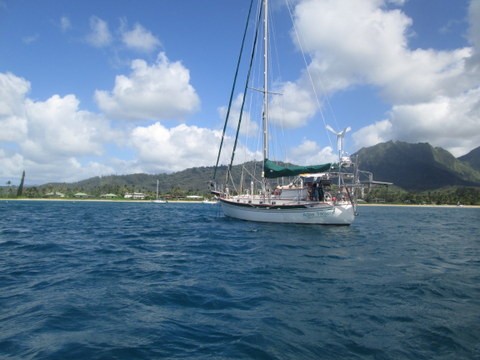 |
We spent a few days anchored i Hanalei Bay while we got the boat and our attitudes prepared for the sail to Alaska
4 Photos
Created 15 June 2014
|
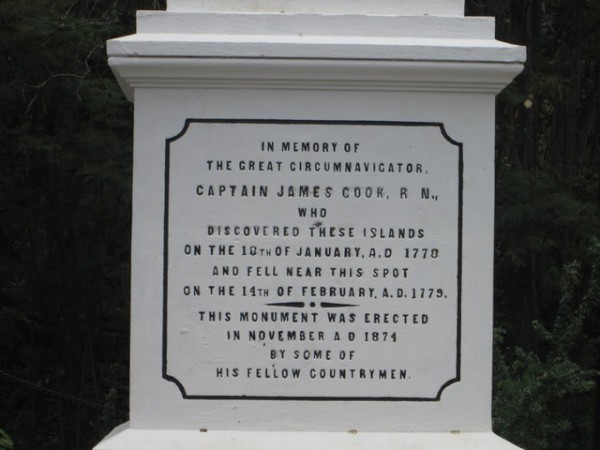 |
Captain James Cook, the famous British explorer, was killed here when an attempt to kidnap the local king did not work out as planned. A monument now marks the spot.
7 Photos
Created 5 May 2014
|
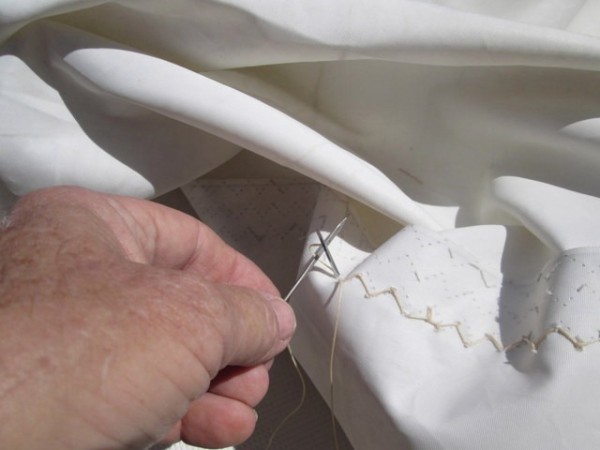 |
This album contains photos that were taken on our passage from La Paz to Hilo. We were unable to upload any of them while at sea
19 Photos
Created 27 April 2014
|
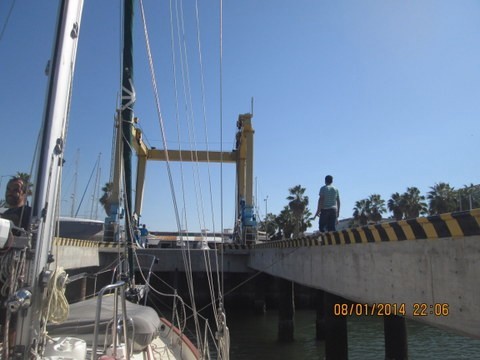 |
Our engine was overdue for a lot of maintenance so we had it pulled out of the boat. this album will hold the photos of the process.
44 Photos
Created 11 January 2014
|
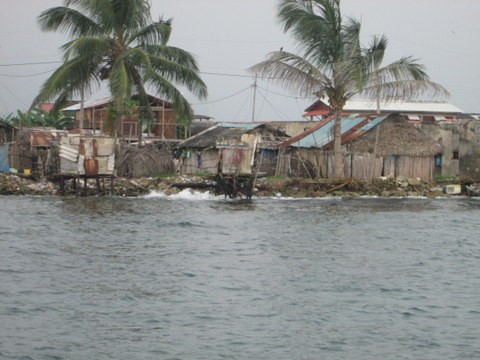 |
Nargana Town is a modern Guna village that has abandoned traditional ways and has electricity, televisions, beer and rum.
4 Photos
Created 25 September 2013
|
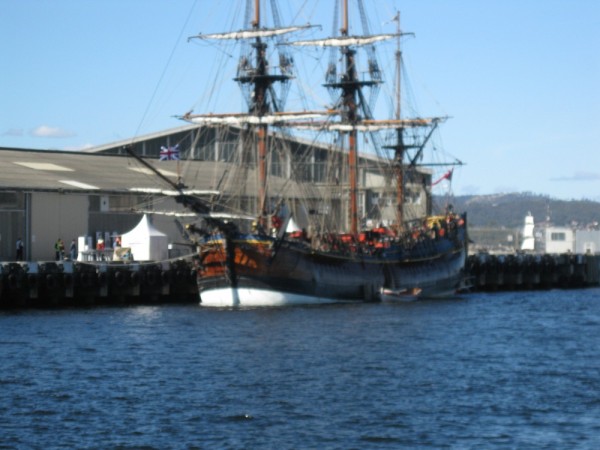 |
Hobart is the capital of Tasmania and the largest city. Large is a strong word to use for Hobart. It was originally called "Hobart Town" and that seems to fit.
7 Photos
Created 26 March 2012
|
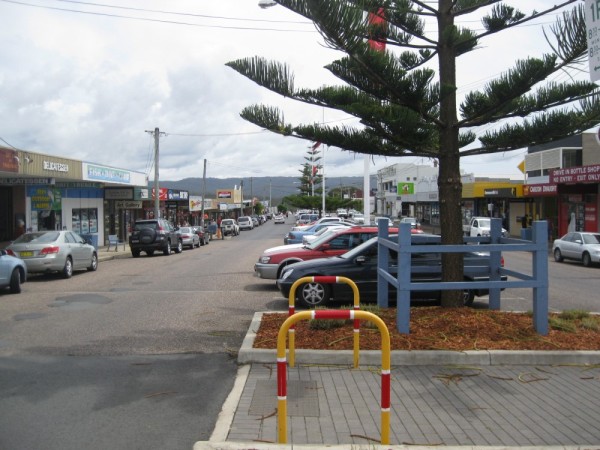 |
This album contains a variety of pictures we took while visiting Eden, a delightful little town on the south east corner of Australia.
6 Photos
Created 10 February 2012
|
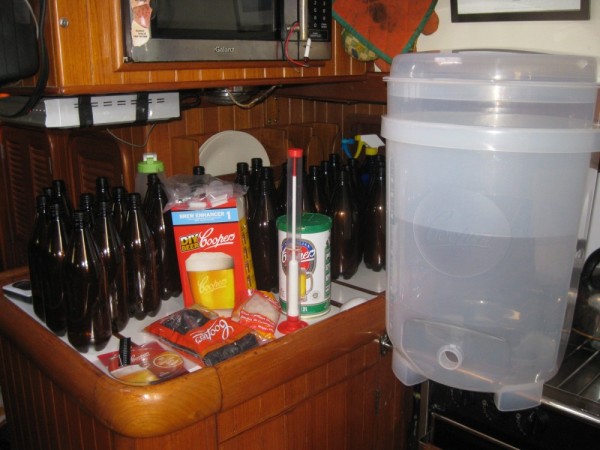 |
This album contains photos of various stages in the brewing process for making beer on board.
2 Photos
Created 17 January 2012
|
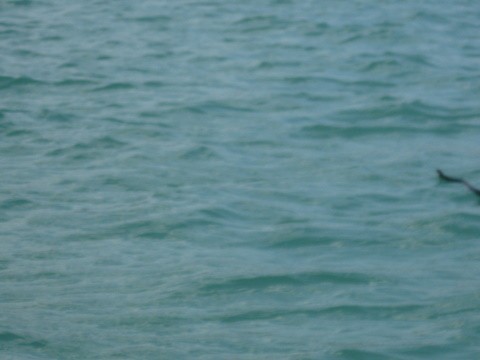 |
Most of Magnetic Island is a National Park so there are lots of hiking trails. We decided to take the hike that goes out to some WWII fortifications.
19 Photos
Created 4 October 2011
|
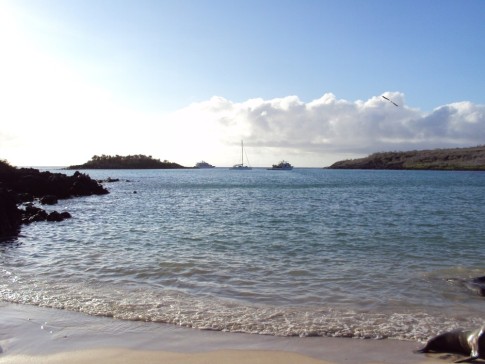 |
This island is also called Barrington Island and is the only island with the specific species of land iguana that is shown in our photos.
7 Photos
Created 8 January 2010
|
 |
this is a place holder for our pics of La Punta Callao. Pics will be added soon
No Photos
Created 22 October 2009
|
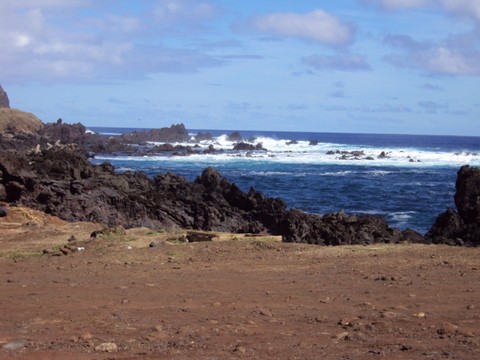 |
this is a place holder for our easter island pics...will add them soon
28 Photos
Created 22 October 2009
|
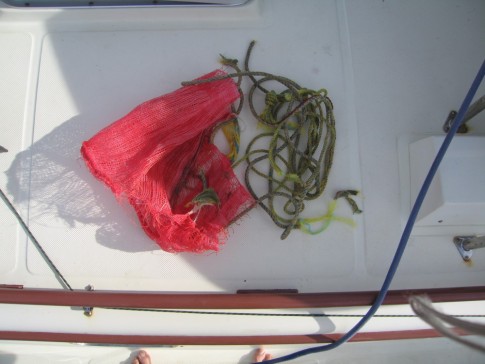 |
We picked up some junk on our prop while motoring from Puerto Escondido to San Evaristo. The pics in this album provide a few details
3 Photos
Created 9 January 2009
|
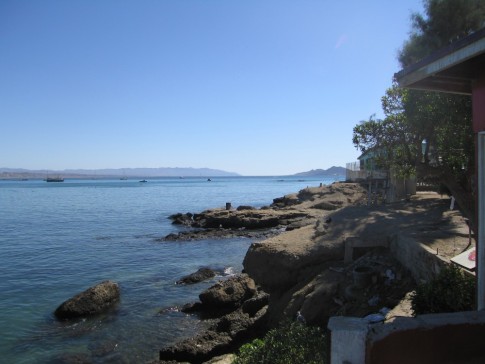 |
Photos taken during our trip ashore in the remote coastal town of Bahia Tortugas.
6 Photos | 1 Sub-Album
Created 26 November 2008
|
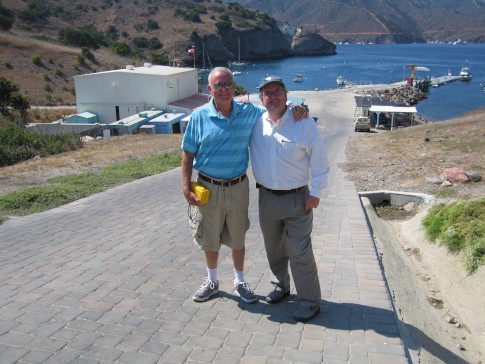 |
The photos in this album show details of our visit to the USC marine lab on Catalina Island.
3 Photos
Created 17 October 2008
|
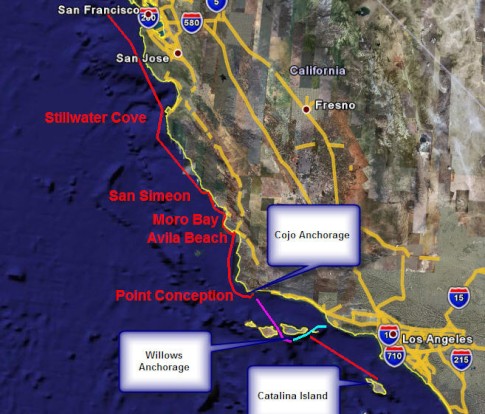 |
This album contains pictures of anchorages, coastline details and people. These photos were taken during our sail down the coast toward Southern California
19 Photos
Created 17 October 2008
|
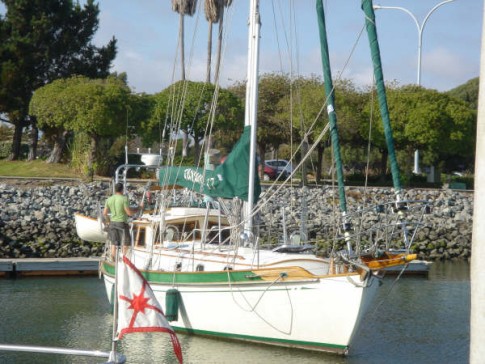 |
This album contains photos from the party we had prior to our departure.
12 Photos
Created 15 September 2008
|
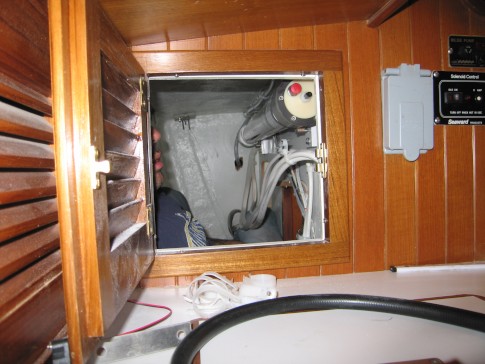 |
Well, it does not really "make" water. What it does is turn sea water into fresh water.
9 Photos
Created 11 July 2008
|
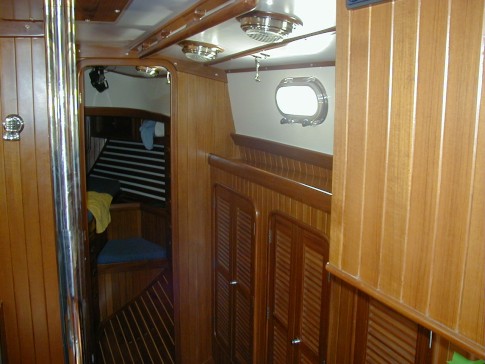 |
The photos in this album show the boat shortly after it was commissioned. I will post another album after we have finished our modifications and are ready to shove off.
8 Photos
Created 26 March 2008
|
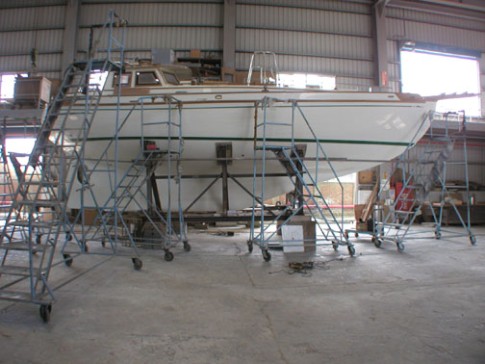 |
The yard provided pictures of the boat at various stages of construction and I have assembled a few of them here to show the process.
7 Photos
Created 26 March 2008
|
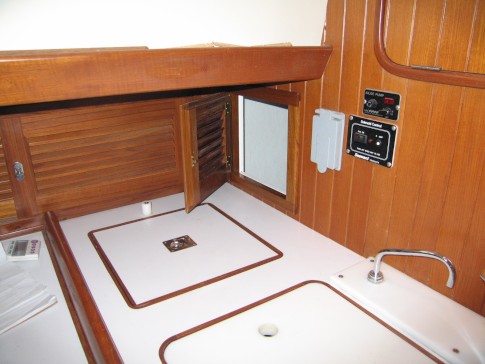 |
This album contains some pics of the modifications we made to the lockers that run along each side of the pilot house.
4 Photos
Created 5 March 2008
|
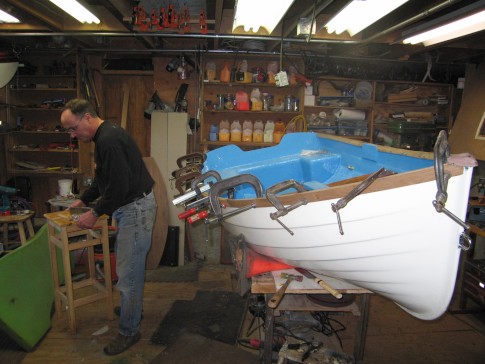 |
These pics show what we did to bring our 30 year old dingy back to life and a couple of enhancements we made that make this a serviceable tender for Active Transport
6 Photos
Created 20 February 2008
|
On the hook in Tomales Bay
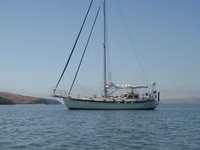
Who: John and Shawn
Port: Seattle, Washington
